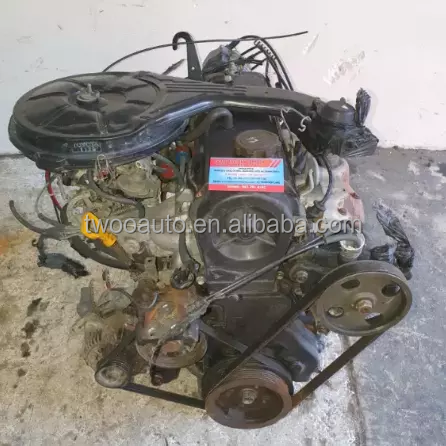Toyota Tazz: An Affordable Car That Doesn’t Compromise on Quality
Toyota Tazz: An Affordable Car That Doesn’t Compromise on Quality
Blog Article
Explore the most recent Patterns in Engine Innovation Via Tazz
In the quickly advancing landscape of automotive technology, Tazz stands at the center, highlighting substantial advancements in engine systems that focus on both advancement and sustainability. tazz. From crossbreed engines that optimize fuel effectiveness to the development of hydrogen gas cells, the patterns shaping contemporary powertrains are not only improving efficiency but additionally resolving crucial ecological obstacles. As the industry remains to push borders, it is vital to consider exactly how these growths will certainly influence future transportation remedies and the wider ramifications for global energy intake. What lies in advance in this pivotal makeover?
Hybrid Engine Innovations
Crossbreed engine innovations represent a critical shift in automobile innovation, incorporating the advantages of interior burning engines with electrical propulsion systems. This assimilation not just improves gas efficiency however additionally decreases exhausts, conference progressively strict environmental regulations. By using both power resources, hybrid engines can enhance performance, providing power when required while conserving gas during much less requiring motoring conditions.
Recent advancements in hybrid modern technology consist of improvements in battery performance and regenerative stopping systems. These technologies enable for better power recuperation throughout deceleration, which can be redirected to assist in acceleration or power auxiliary systems. In addition, producers are concentrating on small designs and lightweight products to optimize the efficiency of hybrid powertrains.
The development of plug-in crossbreeds has likewise increased the market, allowing motorists to bill their lorries utilizing basic electric outlets. This attribute frequently enables for considerable all-electric variety, additional lowering dependancy on conventional fuels. tazz. As the automotive market continues to progress, hybrid engine modern technologies are anticipated to play an important role in linking the void between conventional vehicles and completely electric models, giving a transitional solution that accommodates varied consumer requirements and preferences
Advances in Electric Powertrains
The automobile landscape is quickly evolving, with electric powertrains becoming a leading force in lasting transportation. Breakthroughs in electric vehicle (EV) modern technology are substantially improving performance, individual, and performance experience. Trick developments consist of renovations in battery chemistry, which have actually enhanced power thickness, reduced billing times, and extended general battery life.
Solid-state batteries, for instance, assure to revolutionize the market by offering greater safety and performance compared to standard lithium-ion cells. Additionally, developments in regenerative stopping systems are allowing vehicles to recuperate power during deceleration, adding to overall efficiency.
In enhancement to battery innovation, electric motor designs are becoming more innovative. Technologies such as incorporated electric motors and advanced thermal management systems are assisting to optimize power delivery and decrease weight, inevitably boosting vehicle characteristics.

Jointly, these advances emphasize the dedication to shift in the direction of cleaner, much more efficient transportation remedies, positioning electric powertrains at the leading edge of auto technology.
The Surge of Hydrogen Gas Cells
Significantly, click here for more info hydrogen gas cells are obtaining grip as a feasible option to standard interior combustion engines and battery electric lorries. This modern technology harnesses the chemical power saved in hydrogen, transforming it right into electrical energy with an electrochemical response with oxygen. The key by-product of this procedure is water, making hydrogen fuel cells an environmentally pleasant alternative with zero emissions at the tailpipe.

Car manufacturers are increasingly buying hydrogen gas cell innovation, recognizing its possibility for long-range applications and fast refueling abilities that match standard fuels. Additionally, sectors such as heavy-duty transport and public transportation are specifically fit for hydrogen gas cells, where battery electric solutions may fall short as a result of weight and range limitations.
As research and investment proceed to expand, hydrogen gas cells are positioned to play a substantial function in the future landscape of clean transport and energy remedies.
Enhancements in Internal Burning Engines
Developments in interior burning engine (ICE) innovation are changing traditional vehicles to fulfill modern environmental requirements and performance expectations. One of one of the most significant improvements entails the integration of innovative fuel shot systems. These systems optimize the air-fuel mixture, boosting burning performance and leading to lowered exhausts. Straight fuel shot, as an example, allows for better atomization of gas, causing more full burning and boosted power outcome.
Additionally, turbocharging has gotten prestige, enabling smaller sized engines to provide higher performance without the weight of larger engines - tazz. This innovation not just boosts performance but likewise contributes to decrease gas intake. Variable shutoff timing systems are also being improved, allowing engines to adapt to different driving problems for enhanced torque and responsiveness
Additionally, making use of lightweight materials in engine construction is becoming standard, more improving gas performance by decreasing general vehicle weight. Engine control important site systems (ECUs) are increasingly innovative, allowing real-time changes that maximize performance and emissions.
These improvements jointly signify a critical change in ICE modern technology, aligning with international sustainability objectives while still offering the efficiency motorists get out of their vehicles. As the industry develops, these improvements proceed to form the future of conventional vehicle engineering.
Future Trends in Engine Performance
Substantial developments in engine effectiveness are anticipated as suppliers concentrate on incorporating advanced modern technologies to meet strict ecological guidelines and customer needs. The change towards electrification, hybrid systems, and alternative gas is reshaping the automobile landscape, driving innovations that improve fuel economic climate and lower exhausts.
One of the vital patterns is the application of advanced products and producing techniques. High-strength alloys and lightweight compounds add to lowered car weight, thus boosting overall performance. Additionally, the fostering of turbocharging and variable shutoff timing innovations allows for boosted power result from smaller sized engines, even more enhancing fuel economic situation.

Final Thought
Advancements in find more crossbreed engine systems, electrical powertrains, and hydrogen fuel cells demonstrate a commitment to lowering exhausts while boosting performance. Renovations in interior burning engines and a focus on lightweight products contribute to general engine efficiency.
From hybrid engines that optimize fuel effectiveness to the introduction of hydrogen gas cells, the fads shaping modern powertrains are not just improving efficiency but also attending to crucial environmental obstacles.Crossbreed engine developments stand for an essential shift in automobile modern technology, combining the benefits of interior combustion engines with electrical propulsion systems.Furthermore, turbocharging has actually obtained prominence, enabling smaller engines to provide greater performance without the weight of larger engines. In addition, the adoption of turbocharging and variable shutoff timing technologies permits for enhanced power outcome from smaller engines, additionally enhancing fuel economy.
Renovations in internal burning engines and a focus on light-weight materials add to total engine efficiency.
Report this page